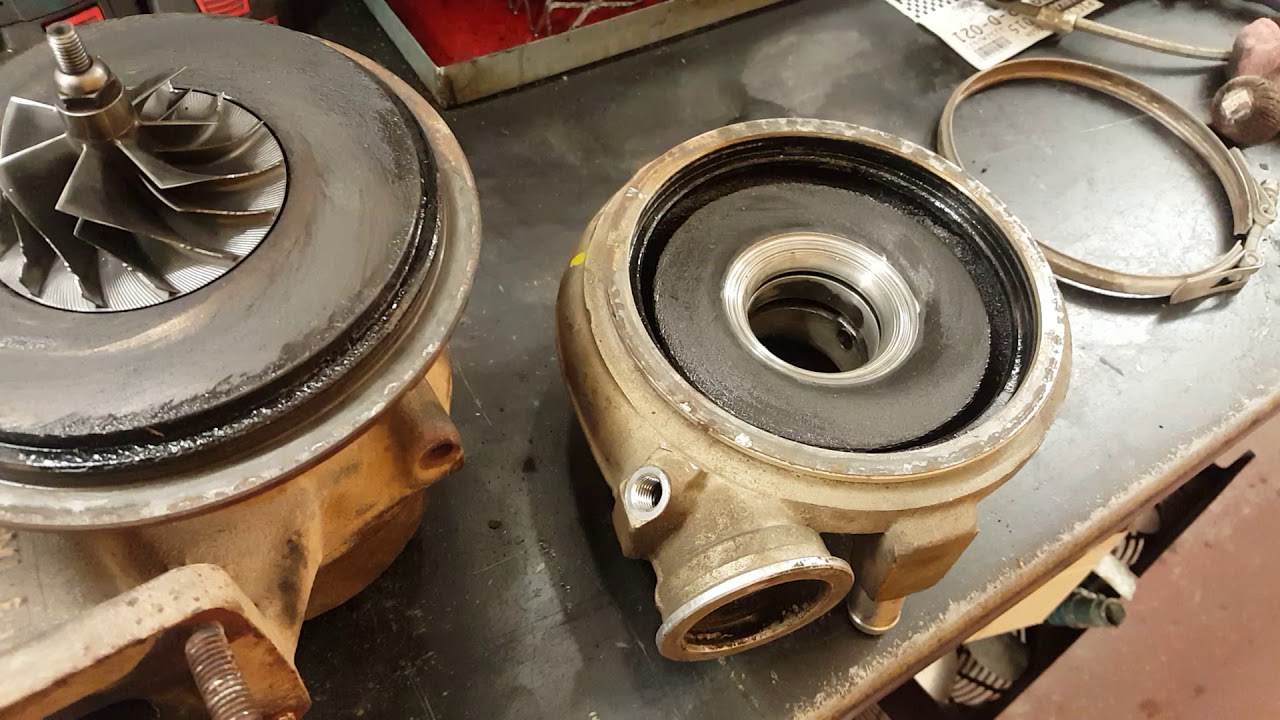After eleven years of operation it’s not surprising to find a worn out turbocharger. The tell tale sign was a very common engine code for these MBE 900 diesel engines. The SPN 2631 has appeared many times over the years and our shop knows where to look and what testing has to be carried out proving experience is the best teacher. The first thing we usually check is turbo boost and exhaust leaks. Pressure checking the charge air cooler, checking hoses and clamps is standard. Any soot tracks appearing around the exhaust piping will cause this code to pop up.
In this case since we own several of these diesel engines and previously replaced a worn out turbocharger in another bus a year older. Checking the turbocharger end play is another step we have put in to our regular checklist. The end play shown in the video shows the obvious failure causing the engine code. The new turbocharger cost us around 2700 dollars but I think of that amount divided in to years of service. Eleven years divided in to the cost doesn’t sound like a lot of money.
The way I see it this is the original turbo and every day use has taken it’s toll but also this part has paid for itself with years of performance. This helps justify the cost of replacement. All of our diesel engines in the fleet are expensive to repair when it comes to major components. Stop and go driving, heavy loads and seasonal stress on our diesel engines contribute to break downs. It’s not hard to see that nothing lasts forever and preventive maintenance is the key to successfully getting the most mileage out of our fleet.
The easiest way to remove the turbocharger is to leave the exhaust manifold attached due to the poor access to the turbo mounting nuts which are very hard to reach. The exhaust manifold gaskets could use replacement anyways to guarantee a good seal and avoid another exhaust leak down the road. There are several other lines and sensors to remove notably the doser (diesel fuel injector for regeneration cycles) coolant lines that run along side the turbo. In the video you can see the zero end play on the new turbocharger.
The tolerances are very slight on a turbocharger so any kind of wear causes contact between the compressor and turbine wheels that rotate at very high speeds. I’m thankful this turbo did not blow a part and cause chunks to circulate through the exhaust and intake system. We will definitely be checking turbo end play on the rest of the Mercedes diesel engines in our fleet and start a turbocharger exchange program.







